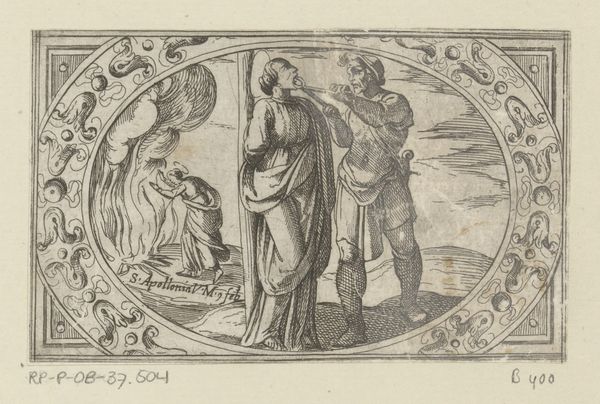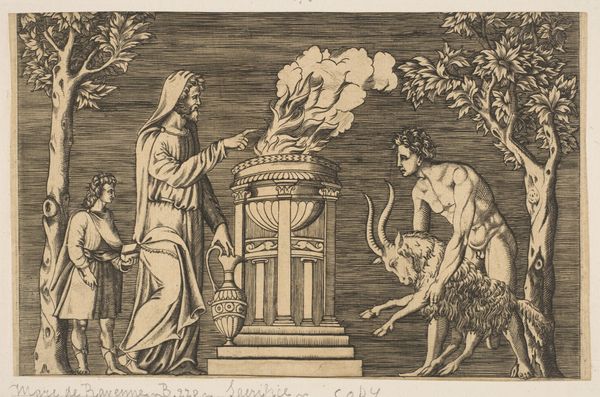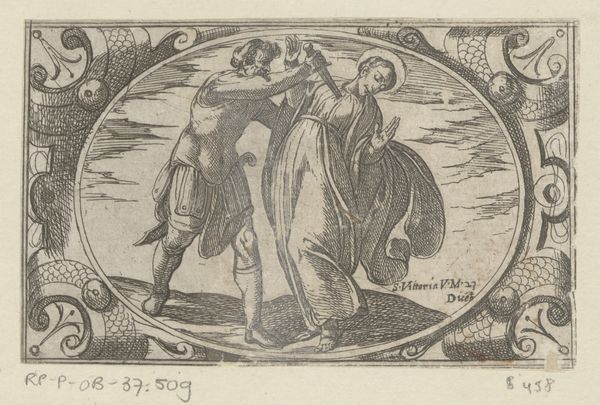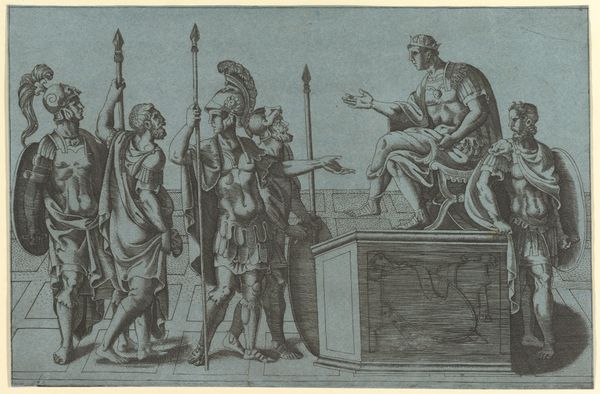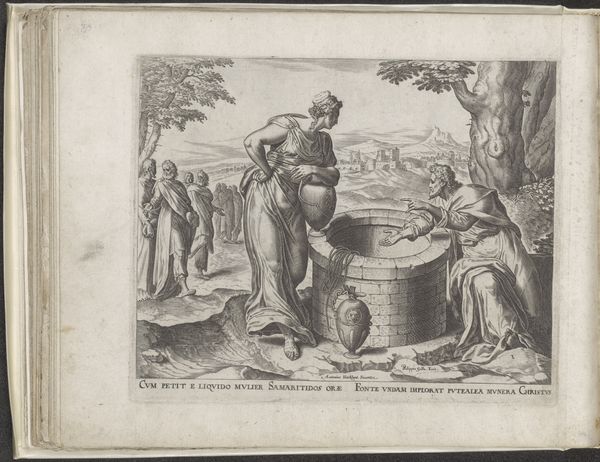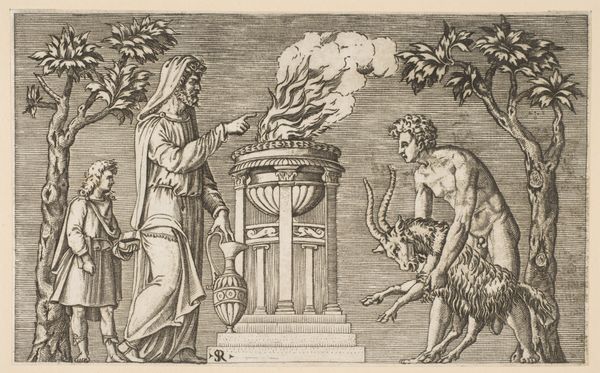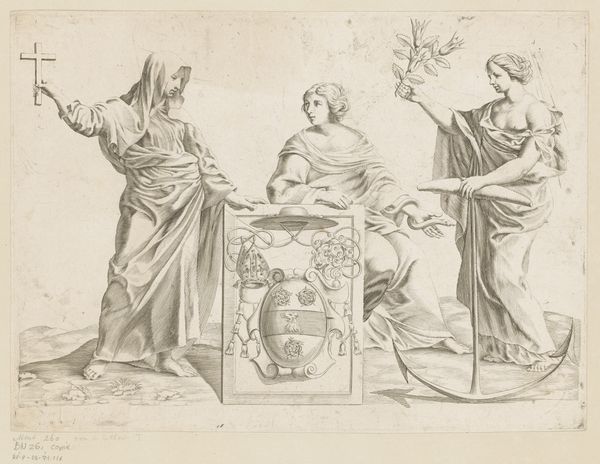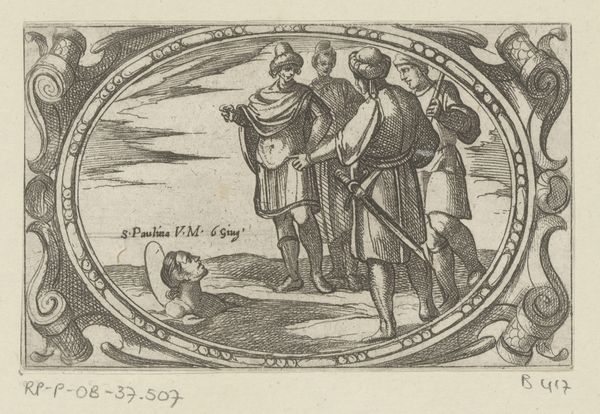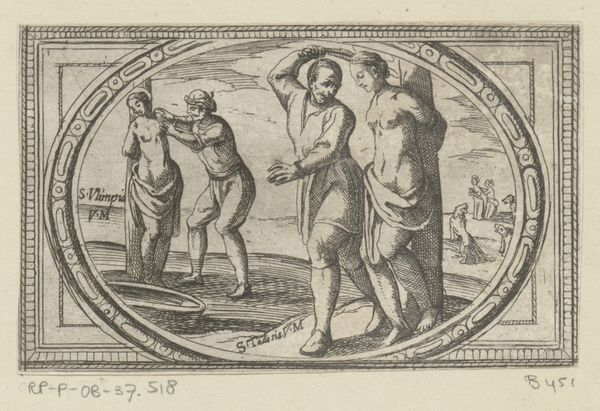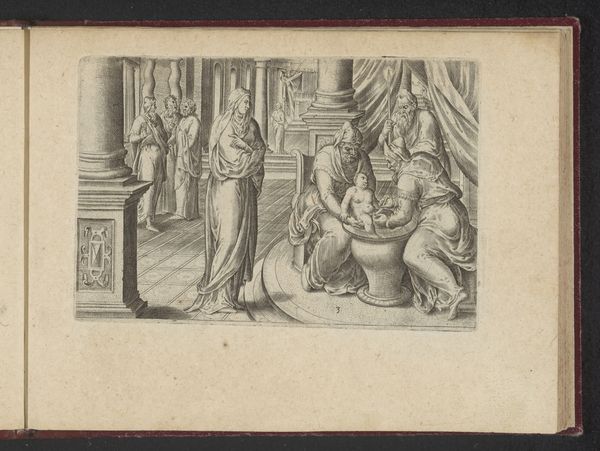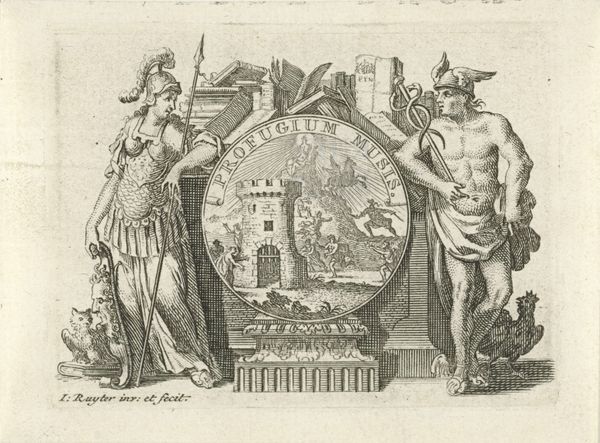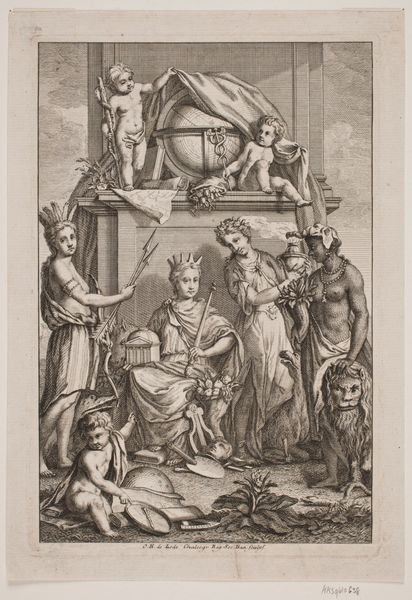
print, engraving
# print
#
mannerism
#
figuration
#
line
#
history-painting
#
engraving
Dimensions: height 73 mm, width 114 mm
Copyright: Rijks Museum: Open Domain
Curator: Here we have "H. Artemia", an engraving made by Antonio Tempesta between 1565 and 1630. It’s currently held in the Rijksmuseum. Editor: The immediate impression is one of stark drama. It feels both intimate and quite violent, encased in this ornate, almost baroque border. Curator: Indeed. Tempesta was working during a fascinating period. If we place him in the late Mannerist style, we can understand that this print comes from a moment when artists sought complexity, sophistication, and even artifice in their compositions. Editor: Right, the posing feels particularly intentional, wouldn't you say? Look at the woman – presumably Artemia – gesturing calmly upwards even as a figure lunges at her with a sword. It raises questions about agency, faith, and performance, almost like she is the martyr that is always ready for that exact scene. Curator: Contextually, these prints played a vital role in disseminating stories, knowledge, and political narratives. Prints like these functioned almost as portable illustrations in an era before mass media. Do you think her calm disposition is one of strength? Editor: I find the stillness more haunting when it's compared with all the action happening around. Is she a victim or a figure resisting? Maybe the narrative aims to portray the complex dynamic of historical gender power, revealing not only victimisation but also inner resistance. And the third figure in the piece, on that strange little plinth… almost like an ancient statue overlooking this drama. He seems rather untouched. Curator: Considering its likely distribution within aristocratic circles, perhaps the image aimed to inspire reflections on resilience during religious conflict and the burden of faith at a time when Europe was so politically divisive? Editor: It prompts us to ask how historical accounts were crafted, reproduced, and consumed by various audiences and also gives voice to silenced figures from the past. Curator: Ultimately, it showcases how artists during periods of unrest found creative means of negotiating power, belief, and visual language. Editor: I think approaching images like this demands that we grapple with these tangled relationships of victimhood and faith but through different approaches and standpoints, finding a conversation with our historical past and the implications to current discussions about intersectionality.
Comments
No comments
Be the first to comment and join the conversation on the ultimate creative platform.
